14+ Sample New Employee Training Plan
-

New Employee Training Plan Template
download now -
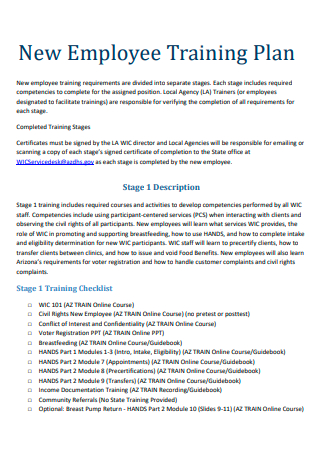
New Employee Training Plan
download now -

New Employee Training For Development Onboarding Analysis Plan
download now -
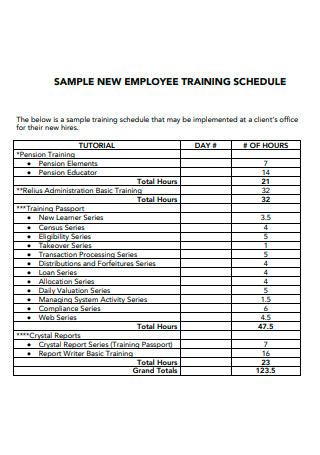
Sample New Employee Warehouse Training Schedule Plan
download now -
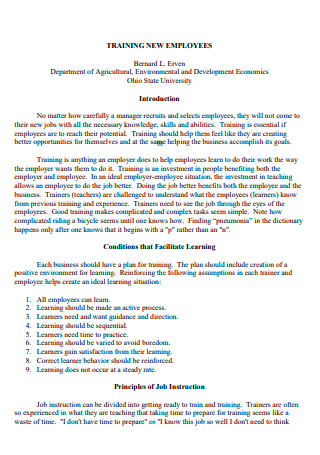
New Employee Training Plan Example
download now -
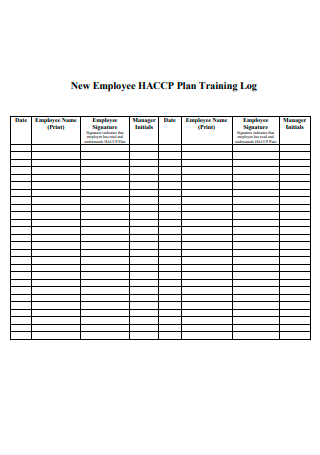
New Employee Training Form Log Plan
download now -
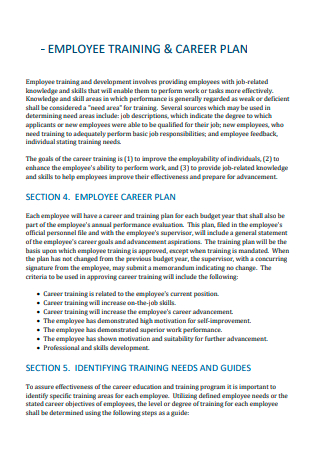
New Employee Detailed Training and Career Plan
download now -
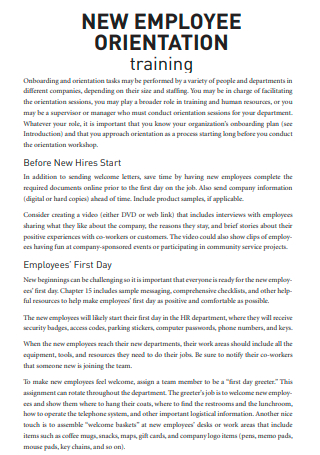
New Employee Orientation Training Plan
download now -
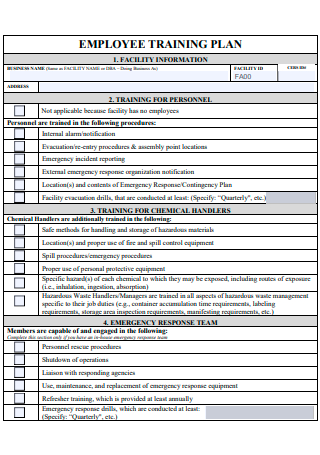
Basic 90 Day New Employee Training Plan
download now -
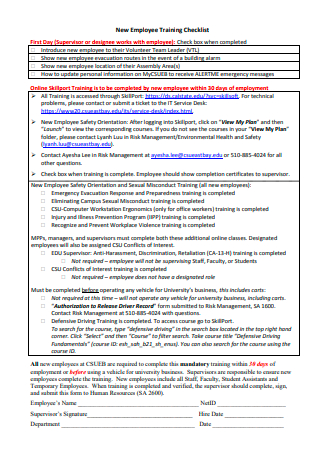
New Employee Management Training Plan Checklist
download now -
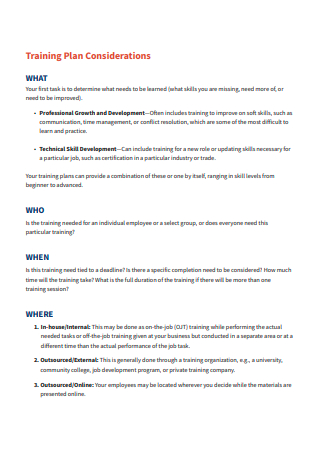
New Employee Training Outline Plan in PDF
download now -
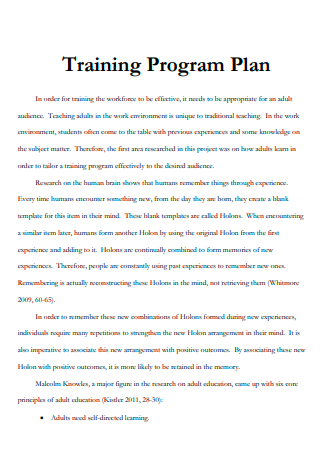
New Employee Gantt Chart Training Program Plan
download now -
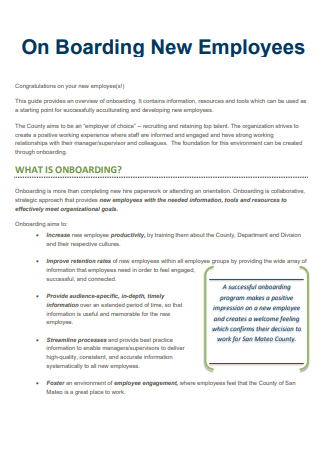
Weekly On-Boarding New Employee Training Plan
download now -
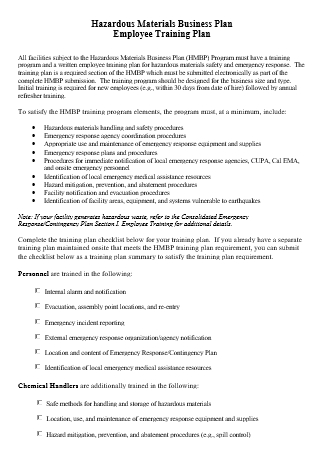
Printable New Employee Induction Training Plan
download now -
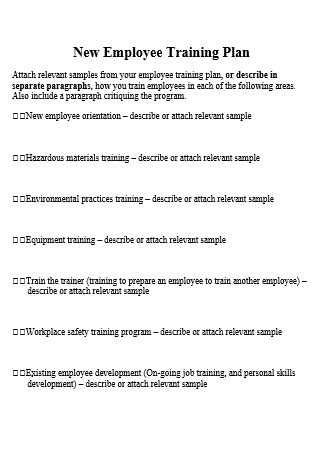
New Employee Monthly Training Plan in DOC
download now
FREE New Employee Training Plan s to Download
14+ Sample New Employee Training Plan
a New Employee Training Plan?
Benefits of Employee Training
How To Develop an Effective New Employee Training Plan
FAQs
Why is training critical for new employees?
How is the training conducted?
How is workplace training defined?
What Is a New Employee Training Plan?
The new employee training plan is a critical component of the hiring process since it educates recruits about its values, vision, and goals and how to succeed in their specific role. This education phase may continue up to 90 days or longer, depending on the company’s specific targeted goals. Recruit turnover is a typical occurrence, according to research. Around 20% of employees leave their jobs during the first 45 days. Although there is no explicit definition, “new hire turnover” typically refers to the percentage of employees that leave a company within the first year of employment.
Benefits of Employee Training
New employees are frequently ecstatic about the prospect of receiving training from their firm or organization. New employees feel pride in being considered for this, but existing employees demonstrate being recognized. To some extent, training new personnel is required to assist them in developing their personal and organizational skills, knowledge, and talents. New employees, in particular, need the training to help them adapt to the company’s vision and align their perspectives with the objectives. This is beneficial because it results in increased productivity and improved performance on assigned tasks. Additionally, it will raise the morale of new team members.
How To Develop an Effective New Employee Training Plan
These five recommendations might assist you in developing a new hire training plan that rapidly integrates your new employee and has them generating high-quality work with minimal coaching.
Step 1: Consult with current staff to determine what should be included in the training.
The most excellent place to begin designing a new hire training plan is with existing employees, particularly those who succeed in their current roles. Consult your existing employees who perform similar functions to those of your incoming hiring. The easiest method to determine what new staff members should do is to speak with current employees. They will ensure that you are aware of all aspects of the role and prepare them for it. By inquiring current employees what information they believe a new hire requires to do their daily job, you can prevent overlooking critical elements. Additionally, it might assist you in identifying holes in your current training plan that your current employees have personally encountered. Inquire of them what they wish they knew on day one that aided in their transition to employment.
Step 2: Make training adaptable, task-based, and continuous.
Because no two new hires are identical, training should be dynamic enough to respond to each new hire’s unique strengths and shortcomings. While all new hire training plans should cover the fundamentals of working at your firm, it is critical to include particular parts to each person based on their interview and professional background. Each individual will enter training with a fantastic set of talents and a unique focus on what they require to complete the training effectively; thus. At the same time, the fundamentals are necessary; the remainder of the training should be flexible enough to accommodate each individual’s unique needs. Instead of a fixed-time training schedule, implement a task-oriented training schedule in which each training item must be completed to a specific standard to progress to full employment. This enables the flexibility to provide each individual with the training experience required, rather than just the minimum criteria.
Step 3: Encourage training at the team level.
Training typically covers the organization’s fundamental expectations and critical information like remuneration and benefits at larger companies. Additional training opportunities at the team level, on the other hand, can help bring a new hire up to speed more quickly. A team-level orientation can assist a new hire in comprehending their individual team’s workflow, reporting structure, and day-to-day expectations for their function, among other topics that a corporate-level orientation may not touch. Additionally, this is a time to integrate a recruit into the established process by introducing them to the team members with whom they will work closely, and any metrics used to measure the team’s productivity.
Step 4: Allow for each new hire’s preferred technique of learning.
Because individuals learn in unique ways, your new hire training program should adapt to various learning styles. Conforming to a recruit’s chosen learning mode can help your training stick faster, lowering the amount of instruction required before a new hire can perform effectively in their role. When onboarding new employees, it is critical to engage them to maximize their capacity to learn.
Step 5: Encourage and involve influential leaders in the training process.
Without influential leaders, your staff will struggle to succeed. This is particularly true for newly hired employees. Consider whether applicants would be the finest guides and coaches for other employees when promoting or hiring for managerial jobs. Then, incorporate their input into the development and implementation of your new hire training strategy. By following these guidelines, you may create a successful new hire training strategy. Constantly elicit feedback from newly hired and trained employees to help you develop and improve your plan. As your business grows and evolves, your new employee training program should as well. There is, after all, always space for improvement.
FAQs
Why is training critical for new employees?
When new hires are genuinely invested in their training, they are less prone to distraction and remember more information. This is beneficial since it reduces the likelihood of retraining, and new workers who are more involved in their new positions also contribute less to your turnover rate.
How is the training conducted?
The Training Process comprises a set of procedures that must be followed to ensure the efficiency of the training program. Training is a systematic activity used to modify employees’ abilities, attitudes, and behavior to prepare them to do a specific job. Training enables students to acquire new knowledge and skills. Staff training also assists learners in applying this information in the workplace, a process referred to as transfer of learning or simply learning transfer.
How is workplace training defined?
Workplace learning is an organized work experience program that enables students to gain real-world work experience or training. Workplace learning assists young people in making educated choices as they prepare their transition from school to happy working life.
Numerous businesses frequently conduct new employee orientation checklistn or introductory training, during which veteran staff is commonly required to lead the way. However, many companies have a set of training programs that require employees to go over the entire company’s procedures and rules to become fully aware of the company’s objectives from the start. Training often lasts a few weeks to a maximum of three months during which the new hire can enjoy himself. Training enables an individual to become acquainted with the area and field in which they will operate. Also, they must understand what they are doing and get off to a solid start.
